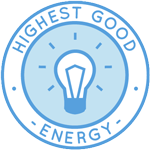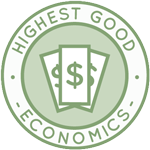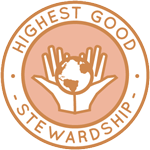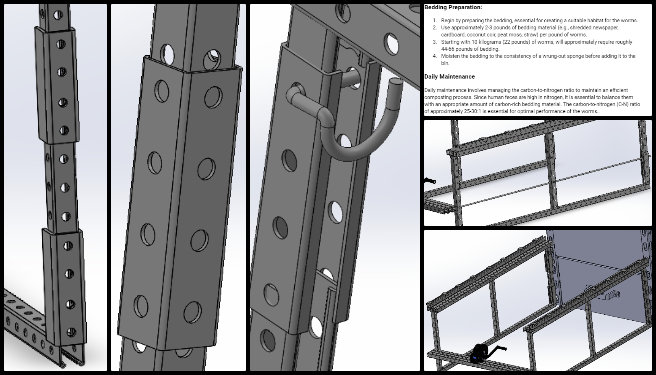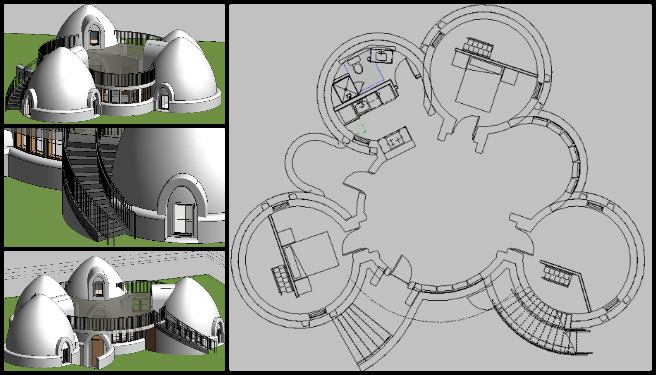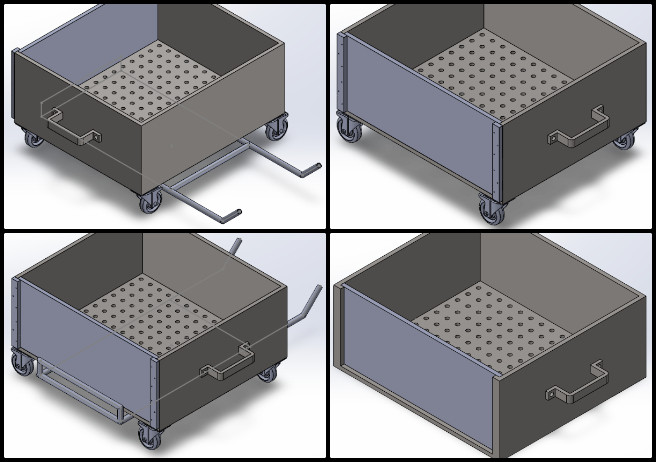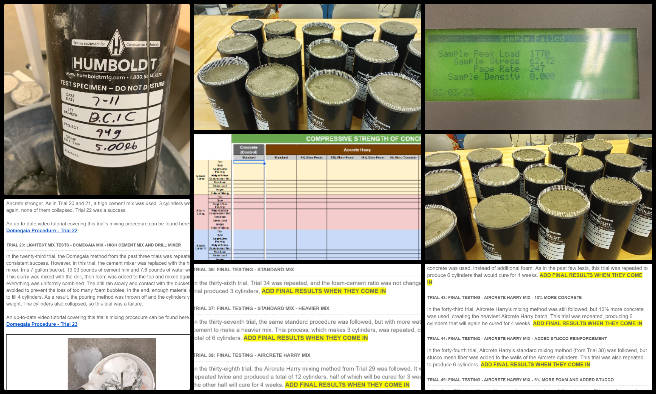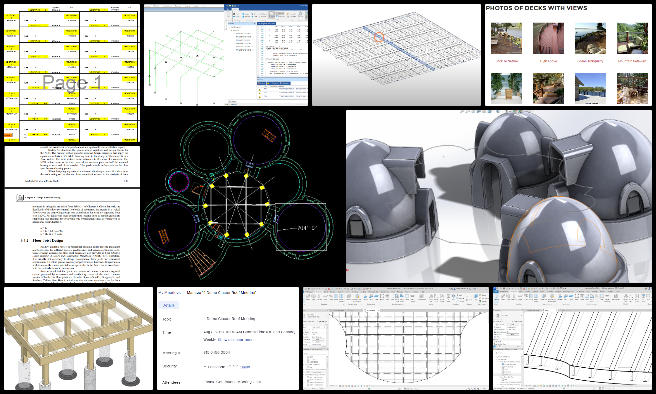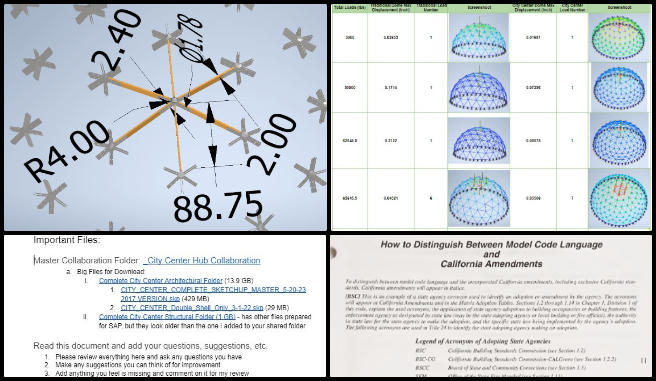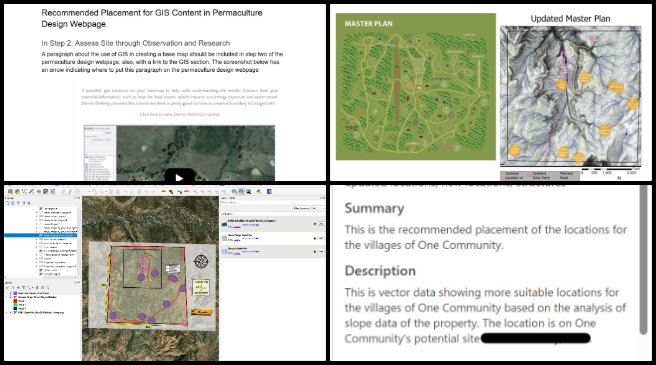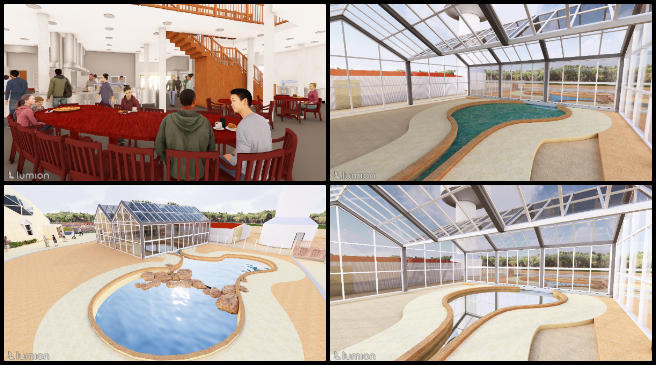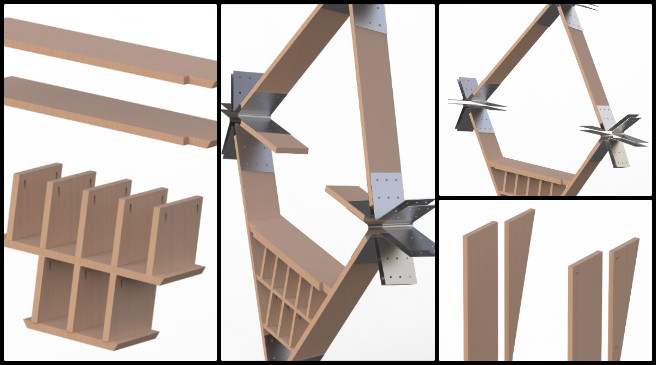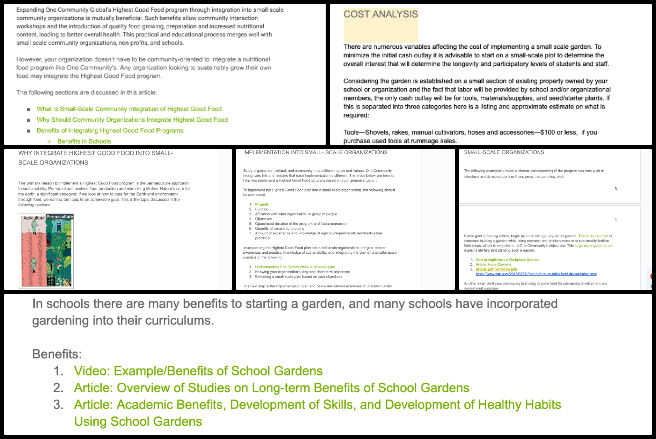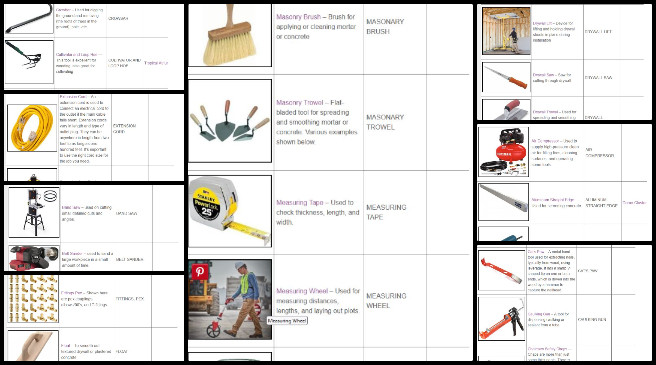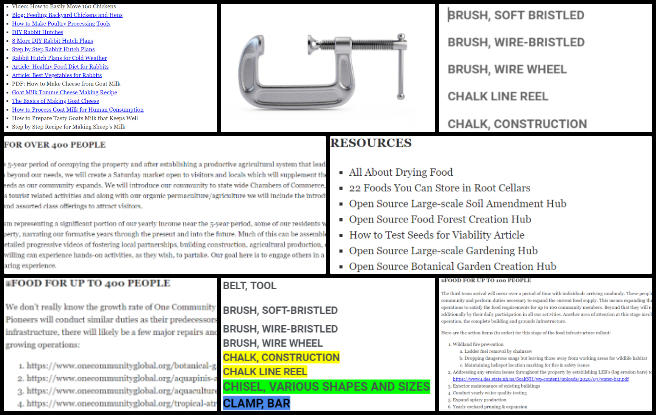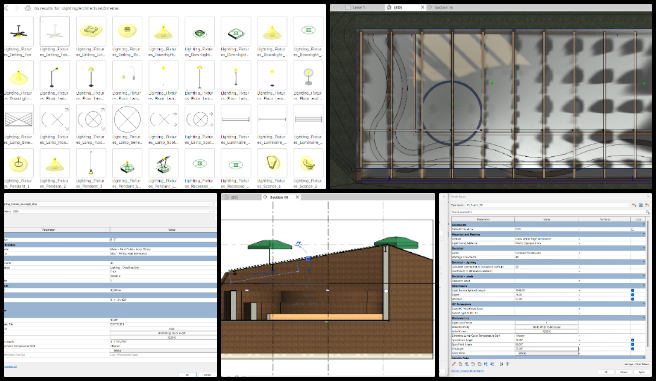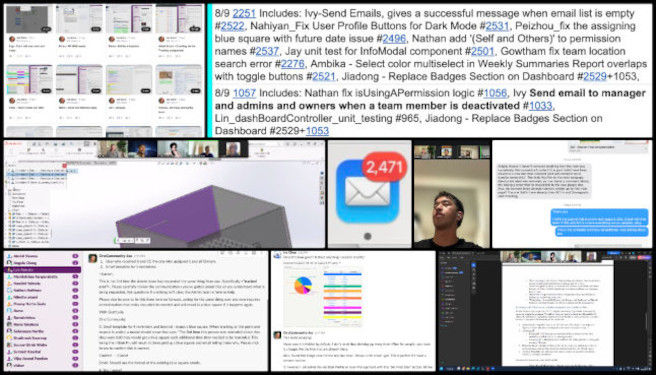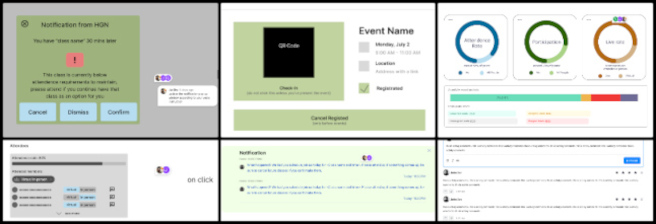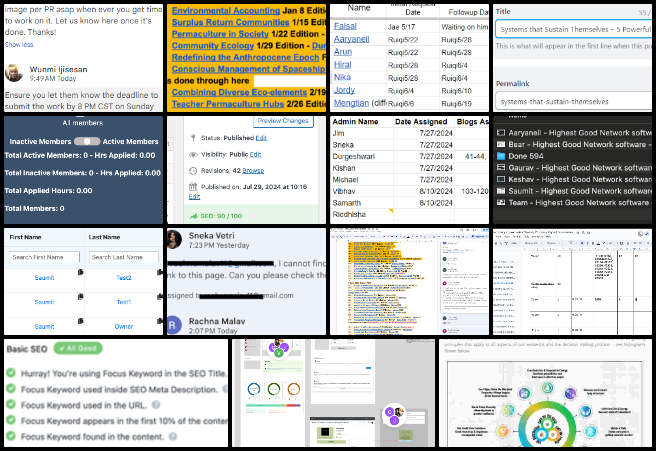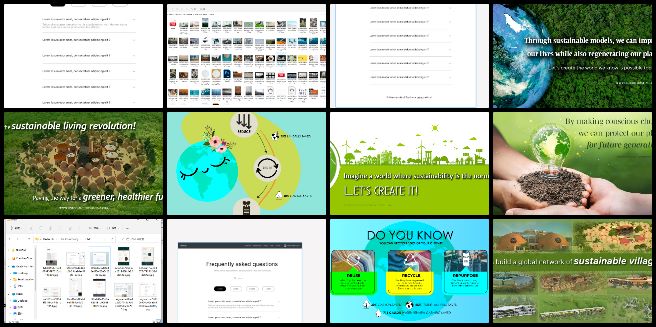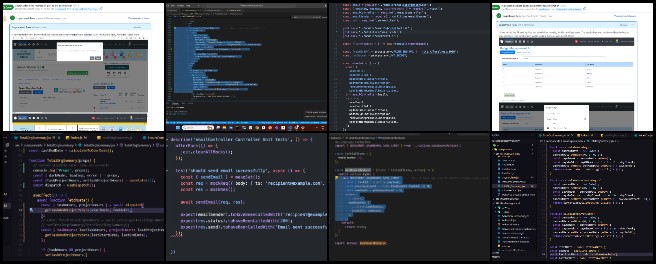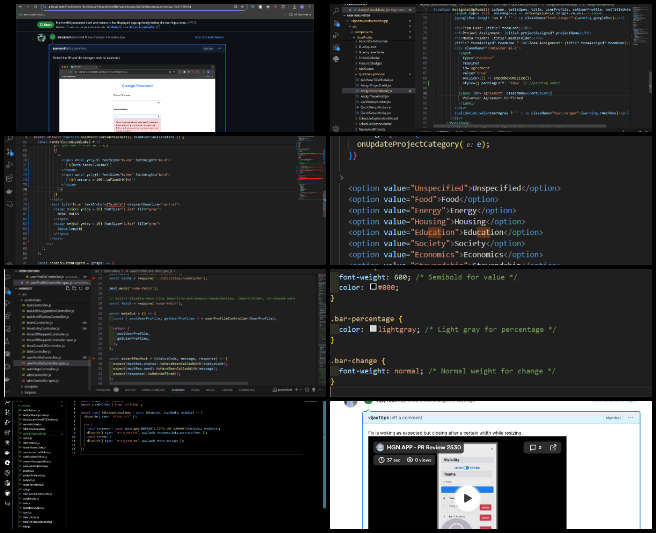Assembling the Social Components for Human Abundance – One Community Weekly Progress Update #595
Posted on August 12, 2024 by One Community Hs
At One Community, we are assembling the social components for human abundance to pioneer sustainable approaches to food, energy, housing, education, economics, and social architecture. Our all-volunteer team is dedicated to creating a self-replicating model designed for “The Highest Good of All.” By open sourcing and free sharing our complete process, we aim to foster a global collaboration of teacher/demonstration hubs, evolving sustainability, and creating a world that works for everyone. Through our efforts, we strive to regenerate our planet and promote fulfilled living for all.
- Here’s our project overview
- Here’s our world-change methodology
- Here’s how this becomes self-replicating
- Here’s how we are open source and free-sharing all the do-it-yourself designs
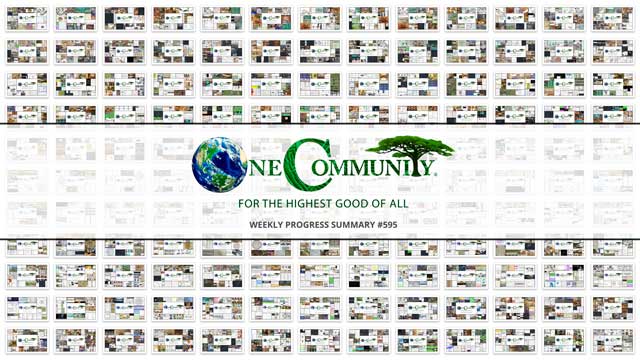
OUR MAIN OPEN SOURCE HUBS
Click on each icon to be taken to the corresponding Highest Good hub page.
One Community’s physical location will forward this movement as the first of many self-replicating teacher/demonstration communities, villages, and cities to be built around the world, assembling the social components for human abundance.. This is the August 12th, 2024 edition (#595) of our weekly progress update detailing our team’s development and accomplishments:
Assembling the Social Components for Human Abundance
One Community Progress Update #595
DONATE | COLLABORATE | HELP WITH LARGE-SCALE FUNDING
CLICK HERE IF YOU’D LIKE TO RECEIVE AN EMAIL EACH WEEK WHEN WE RELEASE A NEW UPDATE
YOU CAN ALSO JOIN US THROUGH SOCIAL MEDIA
ONE COMMUNITY WEEKLY UPDATE DETAILS
HIGHEST GOOD HOUSING PROGRESS
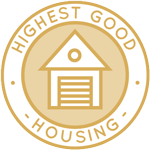 One Community is assembling the social components for human abundance through Highest Good housing that is artistic and beautiful, more affordable, more space efficient, lasts longer, DIY buildable, and constructed with healthy and sustainable materials:
One Community is assembling the social components for human abundance through Highest Good housing that is artistic and beautiful, more affordable, more space efficient, lasts longer, DIY buildable, and constructed with healthy and sustainable materials:
- Learn about assembling the social components for human abundance: Our Upcoming Crowdfunding Campaign
- Learn about the different village models: 7 Sustainable Village Models
- Visit the open source portals for the first two: Earthbag Village OS Hub | Straw Bale Village OS Hub
This week, Joseph Osayande (Mechanical Engineer) continued helping finish the Vermiculture Toilet designs. He made corrections to the report from the meeting, and a list of sources was compiled and expanded to detail the necessary steps for maintaining worm health and a secure environment. He conducted research to find a reliable source for determining the accurate amount of material needed for each bowel release. Additionally, Joseph made changes to the standing system, and proposed two new ideas, including a pin to secure the winch attachment to the stand. This model aims to offer sustainable solutions that not only address waste processing but also enhance living standards, contributing to the model of assembling the social components for human abundance. See below for some of the pictures related to this work.
Michaela Silva (Architect) continued working on finalizing the interior of the Earthbag Village 4-dome home design. This week, Michaela compiled the code requirements for the domes in the 3 dome plans and gathered the code requirements for the mechanical system and ventilation in the 4 dome plan. She also advanced the floor plans and identified the location of the roof deck stair with storage at the front of the home. Additionally, Michaela assisted other members of the four-dome team with Revit. The Earthbag village is the first of 7 villages to be built as part of One Community’s open source model for assembling the social components for human abundance. See her work in the collage below.
Yagyansh Maheshwari (Mechanical Engineer) started his work with Earthbag Village designs. This week, Yagyansh focused on designing methods to dump compost on the ground. He made changes to the drawer design in SolidWorks, including adding L clamps and a mechanism to assist in emptying the drawer. Additionally, he explored options for transferring the drawer to the dumping site and finalized wheels that matched the weight capacity. The Earthbag Village is the first of 7 to be built as the housing component of One Community’s open source model for assembling the social components for human abundance. See some of his work in the collage below.
AIRCRETE TEAM
The Aircrete Testing Team’s summary, covering their work on Aircrete Compression Testing was managed by John Sullivan (CBU Chemical Engineering Student) and includes Jonathan Crago (Civil Engineering Student), Preston Thompson (Civil Engineering Student), and Tad Matlock (Environmental Science Student). This week, Tad continued organizing new content for the main Aircrete webpage, writing trial summaries, and incorporating tutorial videos and images as necessary. He also embedded links within the content to provide additional details and instructions. Additionally, he formatted a spreadsheet intended to store compression testing data for ongoing Aircrete tests. Meanwhile, Jonathan collaborated with Preston and John to produce additional test cylinders using the Aircrete Harry method. The team experimented with varying ratios of foam, cement, and water and tested cylinders with and without stucco fiberglass mesh. They prepared these cylinders for final testing and ensured the lab was cleaned after each session. These aircrete tests contribute to the housing aspect of One Community’s open source model for assembling the social components for human abundance. By improving the aircrete testing and production procedures, the team is advancing assembling the social components for human abundance for future developments. See below for some of the pictures related to this work.
EARTHBAG VILLAGE 4-DOME ROOF TEAM
The Earthbag Village 4-dome Roof Team was managed by Khushboo Parmar (Project Manager) and includes Karthik Pillai (Volunteer Mechanical Engineer) and Yusuf Thanawala (Structural Engineer). The Earthbag Village forms the basis of One Community’s open source model for assembling the social components for human abundance. This week, Karthik focused on understanding the requirements for completing the roof loft design and identifying the necessary materials. He raised important concerns and questions during the weekly team meeting. He has learned Revit and is working to improve his proficiency with the software. He addressed Michaela’s inquiries and worked on the roof deck joists and supporting structures, considering the challenges associated with Revit. Yusuf completed the preliminary design of the loft for the Earthbag village, arranging columns in a 10-sided polygon and planning the beam framing. He reviewed a design guide for wooden structures to grasp the methodology and searched for articles on DIY wooden structures to identify appropriate decking materials. Khushboo handled administrative tasks, including scheduling and conducting interviews for volunteer candidates. She led the weekly 4-Dome Cluster Roof meeting and the biweekly Earthbag Village MEP Team. Additionally, she continued researching California codes related to load-bearing wood roof decks for the 4-Dome Cluster Roof team and assisted the team with this research to advance the project. Khushboo also managed Michaela Silva and Adefola Madehin. The Earthbag village is an integral part of One Community’s open source model for assembling the social components for human abundance. See their work in the collage below.
DUPLICABLE CITY CENTER PROGRESS
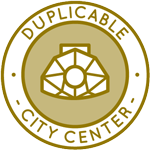 One Community is assembling the social components for human abundance through a Duplicable and Sustainable City Center that is LEED Platinum certified/Sustainable, can feed 200 people at a time, provide laundry for over 300 people, is beautiful, spacious, and saves resources, money, and space:
One Community is assembling the social components for human abundance through a Duplicable and Sustainable City Center that is LEED Platinum certified/Sustainable, can feed 200 people at a time, provide laundry for over 300 people, is beautiful, spacious, and saves resources, money, and space:
- Learn about this building and it’s function: Duplicable City Center Open Source Hub
This week, Arnob Mutsuddi (Mechanical Engineer) started working on Duplicable City Center model. He completed the orientation and initial onboarding process, followed by a review of the documents provided. A comparative analysis conducted earlier was studied, along with familiarizing himself with the previous team’s work. The load calculation for the structure was examined, and plans were made to recalibrate the load test at a later time. The dimensions of the V-shaped hub were analyzed using Autodesk Inventor, and access is awaited to study the U-shaped/Ring Hub Connector i2. Additionally, the BIM regulations for California were reviewed to better understand the architectural requirements. The Duplicable City Center is a foundational part of One Community’s open source model for assembling the social components for human abundance. See below for some of the pictures related to his work.
Chris Blair (GIS Technician/Horticulturist) continued working with GIS data as part of One Community’s Permaculture Design. He reviewed and edited content for the permaculture design webpage and created a side-by-side graphic comparing the original and updated master plans. He also imported feature layers from ArcGIS Pro to QGIS, an open-source GIS software, to improve accessibility. Additionally, Chris created metadata for the feature layers to facilitate easier collaboration and reference. Proper property modeling and understanding is a foundational part of One Community’s model for assembling the social components for human abundance. Below are a few photos showing examples of his work.
Clarice Gaw Gonzalo (Architect) continued her work with the Duplicable City Center room designs, focusing on assembling the social components for human abundance. Clarice focused on adding more people to the dining space, ensuring the tables were filled with a variety of seated individuals, either engaged in conversation or with food nearby. She also revised some files to assign tasks to another volunteer to support the video production. Additionally, she addressed texture problems within the render, considering revisions to the water texture for a more realistic appearance. Clarice updated the glass texture on the greenhouse to make it more translucent and adjusted various settings, including scale, relief, roughness, and opacity. The Duplicable City Center is a foundational part of One Community’s open source model for assembling the social components for human abundance. See below for some of the pictures related to this work.
Nika Gavran (Industrial Designer) continued her work on the Duplicable City Center dormer window installation plans. This week, Nika focused on compiling the assembly order for the 1st-floor dormer window instructions. She created a general list of actions and is rendering them in Keyshot, producing detailed images that will be integrated into an existing document along with the list of materials. The Duplicable City Center is a foundational part of One Community’s open source model for assembling the social components for human abundance. See below for some of the pictures related to this work.
HIGHEST GOOD FOOD PROGRESS
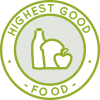 One Community is assembling the social components for human abundance through Highest Good food that is more diverse, more nutritious, locally grown and sustainable, and part of our open source botanical garden model to support and share bio-diversity:
One Community is assembling the social components for human abundance through Highest Good food that is more diverse, more nutritious, locally grown and sustainable, and part of our open source botanical garden model to support and share bio-diversity:
- Learn about the structures: Hoop House Hub | Aquapini & Walipini Open Source Hub
- See what we’ll be growing: Gardens & Hoop Houses | Large-scale Structures | Food Forest | TA
This week, the core team continued expanding the Highest Good Food tools document by incorporating additional tools, equipment, and materials/supplies. Additionally, the core team finalized the review of Haley’s School Integration Project, outlining optimal strategies for small-scale food cultivation within schools and smaller organizations. The review also includes the cost analysis summary centered on a minimalist approach to gauge interest levels and participant commitment. Highest Good Food is a key component for assembling the social components for human abundance within One Community’s open source plans. See their work in the collage below.
Charles Gooley (Web Designer) continued working on the Transition Food Self-sufficiency Plan. He added tools from the Highest Good Food Tools, Equipment, Materials/Supplies design document to the Tools and Equipment for Open Source Construction master page, ensuring links appear correctly when clicked in the address bar. The work included resizing images and copying text from the design document. The tools listed through the end of the first section, up to Ratchet Tie Down Strap, have been completed. Highest Good Food is key to assembling the social components for human abundance within One Community’s open source plans. See his work in the collage below.
Hayley Rosario (Sustainability Research Assistant) continued to update the Highest Good Food page, focusing primarily on the “Garden Establishment and No-Till” section. Hayley focused on finalizing the Highest Good Food draft page, completing the first drafts of the sections “Food for up to 100 people,” “Food for up to 400 people,” and “Food for over 400 people.” She also added the resources section and included some links. During this period, she was assigned to a new project involving the organization of tools, equipment, and materials/supplies in alphabetical order. Highest Good Food is key to assembling the social components for human abundance within One Community’s open source plans. See her work in the collage below.
Jay Nair (BIM Designer) started working on Aquapini and Walipini Planting and Harvesting. His work included understanding the lighting plan requirements for Walipini #1 and familiarizing them with the extensive resources available on One Community’s webpage. He spent time retrieving and reviewing various documents and information related to their projects. In Revit, he worked on adjusting family parameters, such as the Tilt Angle for Lighting_Fixtures_Downlight_Spot, and addressing the technical challenges of placing these fixtures on sloped glazing and beams. Additionally, findings for Zone 1 were identified, considering the specific light requirements for the Cordeauxia edulis (Yeheb Nut) and the optimal fixture placement to ensure sufficient coverage. Highest Good Food is key to assembling the social components for human abundance within One Community’s open source plans. See his work in the collage below.
HIGHEST GOOD EDUCATION PROGRESS
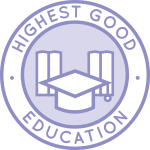 One Community is assembling the social components for human abundance through Highest Good education that is for all ages, applicable in any environment, adaptable to individual needs, far exceeds traditional education standards, and more fun for both the teachers and the students. This component of One Community is about 95% complete with only the Open Source School Licensing and Ultimate Classroom construction and assembly details remaining to be finished. With over a decade of work invested in the process, the sections below are all complete until we move onto the property and continue the development and open sourcing process with teachers and students – a development process that is built directly into the structure of the education program and everything else we’re creating too:
One Community is assembling the social components for human abundance through Highest Good education that is for all ages, applicable in any environment, adaptable to individual needs, far exceeds traditional education standards, and more fun for both the teachers and the students. This component of One Community is about 95% complete with only the Open Source School Licensing and Ultimate Classroom construction and assembly details remaining to be finished. With over a decade of work invested in the process, the sections below are all complete until we move onto the property and continue the development and open sourcing process with teachers and students – a development process that is built directly into the structure of the education program and everything else we’re creating too:
- Program Overview: Education Open Source Hub
- How the components work together: How to use the Education for Life Program
- Lesson Plans for Life – Lesson Plans How-to
- Foundations of Outstanding Leaders, Teachers, and Communicators
- Curriculum for Life
- Teaching Strategies for Life
- Learning Tools and Toys for Life
- Evaluation and Evolution
This week, Apoorv Pandey (Mechanical Engineer) continued helping with the engineering details for the Ultimate Classroom part of the Highest Good Education component. He continued working on the write-up for the report, updating the initial software and detailing section to address any questions or changes requested so that it is understood by both engineers and the general public. A meeting was also organized by Brian Muigai Mwaniki (Structural Engineer), Apoorv’s manager to discuss the technical issues. The One Community model of combining forward-thinking education with sustainably built classrooms like this is an excellent example of assembling the social components for human abundance. See the collage below for his work.
HIGHEST GOOD SOCIETY PROGRESS
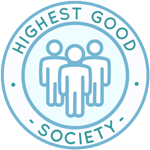 One Community is assembling the social components for human abundance through a Highest Good society approach to living that is founded on fulfilled living, the study of meeting human needs, Community, and making a difference in the world:
One Community is assembling the social components for human abundance through a Highest Good society approach to living that is founded on fulfilled living, the study of meeting human needs, Community, and making a difference in the world:
- Read the Highest Good society overview: Highest Good Society
- Learn about the model for fulfilled living and sharing: A Day in the Life
- Learn about the 4 economic models: RBE | For-profit | Non-profit | Entrepreneurship
This week, the core team completed over 49 hours managing One Community’s volunteer-work review not included above, emails, social media accounts, web development, new bug identification and bug-fix integration for the Highest Good Network software, and interviewing and getting set up new volunteer team members. They also shot and incorporated the video above that talks about assembling the social components for human abundance and how assembling the social components for human abundance is a foundation of the bigger picture of everything One Community is doing. The image below shows some of this work.
Arun Chandar Ganesan (Volunteer Data Analyst and SEO and Social Media Assistant) continued on improving webpage SEO, reviewing numerous pages, including some previously abandoned ones, and worked on the assigned webpages. He also improved the scores of his previous web pages. Additionally, he managed and coordinated the scheduling of posts on One Community’s social media platforms such as Facebook, Instagram, Pinterest, and LinkedIn, and regularly updated the tutorials. This work helps One Community’s mission of assembling the social components for human abundance. The following images show his work for the week.
Jia Shu (UX Designer) worked on refining existing elements and defining separate workflows for organizers and members, each with distinct functions such as recording attendee information and scanning QR codes for registration. Based on feedback from Joe’s video, she made several adjustments, including incorporating a QR code scan feature into the check-in process, updating the notification system to a pop-up style with options to decline, accept, or ignore, enhancing the visual UI for activity attendance rates, and adding filter and rating options to the comments section, along with other minor UI refinements. This work helps One Community’s mission of assembling the social components for human abundance. The picture below shows some of this work.
ADMINISTRATION TEAM
The Administration Team’s summary, covering their work administrating and managing most of One Community’s ongoing process for assembling the social components for human abundance was managed by Sneka Vetriappan (Data Analyst) and includes Durgeshwari Naikwade (Data Analyst), Hritvik Mahajan (Data Analyst), Kishan Sivakumar (Administative Assistant and Software Team Manager), Michael Juma (Administrative Assistant), Olawunmi “Ola” Ijisesan (Administrative and Management Support), Praneeth Reddy Guduru (Data Analyst), Rachna Malav (Data Analyst), Ratna Meena Shivakumar (Data Analyst and Admin), Riddhisha Chitwadgi (Administrative Assistant), Ruiqi Liu (Administrative Assistant), Saumit Chinchkhandi (Software Engineer), T R Samarth Urs (Data Analyst), Vibhav Chimatapu (Data Analyst/Admin Assistant) and Zuqi Li (Administrative Assistant and Economic Analyst). This week, Durgeshwari scheduled a key meeting with UI/UX designers for phase 3, documented changes, worked on user stories, and handled interviews for the Highest Good Network Application. Hritvik completed and posted blogs for the Highest Good Food and Duplicable City Center teams, provided feedback on multiple PRs, and reviewed important documents. Kishan focused on the weekly update blog, reviewing SEO optimization for 20 pages and incorporating peer feedback. Michael prepared team summaries for the Reactonauts and Skye software teams, enhanced SEO titles, and carried out in-depth reviews of the GIS and climate battery projects. Ola assessed PR teamwork, onboarded new volunteers, and ensured the accuracy of PR images and reports. Praneeth began his role as a Data Analyst and Administrator, completing his training, providing feedback on weekly summaries, and editing a blog post. Rachna managed the hiring process by interviewing candidates, assigning SEO pages, and resolving task assignment errors. Ratna prepared weekly summaries, handled interview scheduling, and reviewed blog formatting and SEO scores. Riddhisha worked on SEO, content review, and administrative tasks, providing feedback to new members, and organizing team summaries, while focusing on assembling the social components for human abundance. Ruiqi completed reviews for the Dev Dynasty and Git-R-Done teams, followed up on member responses, and continued working on various benchmarking and content projects. Saumit created PR team summaries, tested frontend development PRs, and handled interviews with potential volunteers. Samarth managed the PR review team, provided feedback on their work, and summarized their efforts in a blog post. Vibhav continued his administrative duties, reviewed PR team work, and optimized blogs for better SEO performance. Zuqi organized weekly summaries for the Graphic Design and Alpha Teams, reviewed optimized blogs, and provided necessary feedback for adjustments. One Community’s model for assembling the social components for human abundance includes developing and maintaining a supportive administration team like this. You can see the work for the team in the image below.
GRAPHIC DESIGN TEAM
The Graphic Design Team’s summary was managed by Zuqi Li (Administrative Assistant and Economic Analyst) and included Anusha Tariq (Graphic Designer), Ashlesha Navale (Graphic Designer), Helen Ma (Graphic Designer) and Junyuan Liu (Graphic Designer, UI/UX Designer), covering their work on graphic designs for assembling the social components for human abundance. This week, Anusha reviewed all instructed videos to identify previous mistakes in preparation for upcoming tasks and created a bio and announcement. She added two bios and announcement pictures for review, along with another assigned announcement. Anusha made progress on updating the website with a focus on fixing SEO issues. She also created and attached another announcement and bio picture in a document file for feedback. Ashlesha worked on creating two volunteer announcements, including two bio images and two announcement images. She also developed web content for both volunteer announcements and researched and curated a collection of nature-based and theme-based images for social media. This week, she created five social media images titled Better-World Choice, Sustainability-Norm, Sustainability-Revolution, Sustainability-Sustainable Model, and Sustainability-Villages. Helen focused on two infographic concepts designed to engage readers with content on webpages discussing how to reuse, recycle, and repurpose various materials. One concept has a corporate look, while the other is more playful. Junyuan organized the content previously collected and created for social media images. He met with the UI/UX team in HGN Phase 3 to determine the overall content and goals for the phase, leading to the decision that the first task would focus on the content in epic5. He researched and sketched the FAQs page for epic5 and created the initial demo of the FAQs page in Figma. See the Highest Good Society pages for more on how this contributes to assembling the social components for human abundance. See the collage below to view some of their work.
HIGHEST GOOD NETWORK PROGRESS
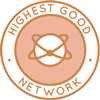 One Community is assembling the social components for human abundance through open source Highest Good Network® software that is a web-based application for collaboration, time tracking, and objective data collection. The purpose of the Highest Good Network is to provide software for internal operations and external cooperation. It is being designed for global use in support of the different countries and communities replicating the One Community sustainable village models and related components.
One Community is assembling the social components for human abundance through open source Highest Good Network® software that is a web-based application for collaboration, time tracking, and objective data collection. The purpose of the Highest Good Network is to provide software for internal operations and external cooperation. It is being designed for global use in support of the different countries and communities replicating the One Community sustainable village models and related components.
- Learn about our open source community collaboration and management software: The Highest Good Network
This week, the core team continued their work on the Highest Good Network PRs testing, confirming the fixed PRs. The resolved HGN PRs included improvements to user interface functionality: a successful message for empty email lists (PR #2522), corrected dropdown color selection (PR #2225), and enhanced clarity for the user dashboard status indicator (PR #2527). Assembling the social components for human abundance was a key focus as unresolved issues included functionalities like team management (PR #2412) and project archiving processes (linked video). Bugs related to manual timesheet entry for past years (FE#2319) and project/team lost time management (500 error) were also investigated. Additionally, improvements were suggested for user notifications upon team member deactivation (PR1033) and report clarity within the Weekly Summaries Reports page (PR #2300). Team location search functionality also required further examination (PR #2276). Other activities included setting up test accounts for time tracking (PR #996) and core team functionalities (referencing PR #958), as well as documenting user interface discrepancies related to dashboard views and weekly summaries. See the Highest Good Society and Highest Good Network pages for more on how this relates to assembling the social components for human abundance. The collage below shows some of their work.
ALPHA SOFTWARE DEVELOPMENT TEAM
This week, the Alpha Team’s summary, covering their work on the Highest Good Network software was managed by Zuqi Li (Administrative Assistant and Economic Analyst) and includes Anand Seshadri (Software Engineer), Carlos Gomez (Full-stack Software Developer), Jordy Corporan (Software Engineer) and Logeshwari Renu (Software Engineer). The Highest Good Network software is how we will manage and measure our processes for assembling the social components for human abundance across our social architecture, construction, production, and maintenance processes. Anand completed updates to the dashboard task to ensure that task deadline counts reflect when a task’s hours suggestion is approved, with the red notification circle showing the correct count. He added logs to address and fix rendering issues for task updates in the dashboard component, reviewed the reducer responsible for incrementing the count, and fixed the rendering issue related to the task deadline count increment. Anand updated TeamMemberTask and raised PR 2547. Additionally, he began addressing changes requested in an existing PR, including clearing start and end date error fields when the form resets, and is working on fixing the date calendar view in dark mode, with plans to complete this next week. He is also focused on assembling the social components for human abundance to enhance the overall user experience. Carlos resolved merge conflicts between PR#2503 and the development branch, incorporating feedback from Jae and team members. He reviewed PR#2508 from Abi regarding the bar chart template and identified the need to compare the last full week with the previous full week for the hours completed section. Carlos also submitted PR#2540 to introduce new date functions that automatically calculate the required date ranges and integrated useDispatch from react-redux to retrieve complete data for taskProjectHours. Jordy continued to make progress on the unit tests for the emailController. He is focused on the first test and, although encountering some blockers, remains committed to overcoming them and prioritizing the task’s completion. Assembling the social components for human abundance, Logeshwari worked on adding a total badges hyperlink in the Profile Page and implemented a modal to display the list of user badges in the same order as the Badge Management ranking when the total badges count is selected. Additionally, she reviewed and tested two pull requests: PR#2539, which involved verifying the search functionality for first and last names displayed in a table with radio button user selection, and PR#2538, which tested and confirmed the redirection functionality from the selected user to the current user. See the Highest Good Society and Highest Good Network pages for more on how this relates to assembling the social components for human abundance. View some of the team’s work in the collage below.
BINARY BRIGADE SOFTWARE DEVELOPMENT TEAM
The Binary Brigade Team’s summary overseeing advancements in the Highest Good Network software was managed by Min Sun (Software Engineer) and includes Aaryaneil Nimbalkar (Software Developer), Deepthi Kannan (Software Engineer), Huijie Liu (Software Engineer), Peizhou Zhang (Software Engineer), Sai Sarath Kumar Alavakonda (Software Engineer), Sri Sudersan Thopey Ganesh (Software Engineer), Vigneshwar Muriki (Software Engineer) and Vijay Anand Pandian (Full Stack Software Engineer). The Highest Good Network software is how we’ll be managing and objectively measuring our process for assembling the social components for human abundance through our social architecture, construction, production, and maintenance processes.
This week, Aaryaneil tested several pull requests (PRs) to ensure smooth integration with the existing system. Key PRs included the addition of a total members count in the members popup (#2506), providing users with a quick overview of member statistics, and Deepthi’s fix for the ‘Volunteer Agreement Confirmed’ checkbox padding (#2554), which ensured a consistent and user-friendly design. Aaryaneil also tested Vijay Anand’s separate components for filtering and viewing reports by date range on the reports page (#2510), improving user navigation and data accessibility. He evaluated Nandini’s work on fixing the alignment of checkboxes and labels in the PieChart section (#2505), enhancing the aesthetic and functionality of the data visualization. Shrada’s addition of missing form validation on the user profile page (#2507) was also reviewed to ensure users received immediate feedback on input errors, thus improving interaction and data integrity. Additionally, assembling the social components for human abundance was a key focus, integrating various elements to foster community growth and connection.
Deepthi focused on fixing a bug in the Highest Good Network (HGN) software related to the “Volunteer Agreement Confirmed” checkbox, which had a misalignment issue due to missing padding. She updated the `AssignSetUpModal.jsx` file by adding the necessary padding using inline styling and refactored the checkbox component to improve readability and maintainability. Deepthi created pull request #2554 for review and addressed the PR review comments by making additional changes.
Huijie resolved the merge conflicts for PR #1004 and created response recording videos for change requests. She completed her work on the role distribution pie chart, identified an issue with overlapping text for roles with small angles, and is currently confirming whether to display only the top roles to keep the chart clean. Additionally, Huijie claimed and began working on a new task to fix the ability to change the start and end dates on the profile page, while also assembling the social components for human abundance. Peizhou worked on the task of fixing the incorrect category issue of the projects, on the Project page. He also discovered that on the Project page, users are not able to change the category of an existing project, because the update function is undefined. He is working on fixing these two issues.
Sai began working on the HGN REST backend pull request 608 and Highest Good Network frontend pull request 1531, which together involve changes across 17 files (11 on the frontend and 6 on the backend). The files were reviewed to understand the task at hand, identify the source of errors, and determine how to address the requested changes in the pull requests, while assembling the social components for human abundance.
Sri initially aimed to implement the Team Stats Bar Chart component using Chart.js and react-chartjs-2, intending to display team statistics with custom labels. The component was designed to accept data and colors as props, showing team names, values, and changes in volunteer numbers, with colors determining bar appearance. However, challenges arose in applying different colors to each label part due to Chart.js limitations, and attempts to manually draw text using the afterDraw method resulted in errors. Given these difficulties, Sri switched to Recharts, which offered more straightforward customization and was better suited to the project’s needs, providing the flexibility and simplicity necessary for effective component customization, while assembling the social components for human abundance.
Vigneshwar initially managed state for user locations within the MapComponent using useReducer and useEffect, but this approach was limited in scalability. To improve modularity and reusability, he decoupled the state management logic and organized it into separate actions and reducers files. He introduced a GlobalStateProvider to allow easy access to global state across the application. Additionally, Vigneshwar implemented heatmap functionality using leaflet.heat with react-leaflet to visualize user concentration and added a message styled in red italics to inform users about data limitations, ensuring they are aware that inactive or deactivated volunteers are not displayed. Assembling the social components for human abundance, he enhanced the overall user experience by integrating these features seamlessly.
Vijay focused on improving user experience and resolving several interface issues in the HGN Software Development project. Efforts were made to disable the “Assign Badge” button unless a name is typed in the input boxes, and a fix was implemented in the badge assignment modal to display badges with an internal scroll, eliminating the need to scroll to the bottom to click the confirm button. A pull request (PR #2539) was raised to replace the badge assignment search functionality to display results in a table for better user experience, along with fixes to failing test cases. PR reviews were done for several fixes: the reports page horizontal scrolling issue on mobile dimensions (PR #2552), a redirection issue in dashboard mode (PR #2538), the addition of an information icon to the permission management page (PR #2536), handling long description inputs in time logs (PR #2534), and a teams modal mobile view fix on the user profile page (PR #2530). See the Highest Good Society and Highest Good Network pages for more on how this relates to assembling the social components for human abundance. View some of the team’s work in the collage below.
BLUE STEEL SOFTWARE DEVELOPMENT TEAM
The Blue Steel Team’s summary, presenting their work on the Highest Good Network software was managed by Jingyi Jia (Software Engineer, Team Manager), and includes Jay Srinivasan (Software Engineer), Parth Rasu Jangid (Software Developer), Ramakrishna Aruva (Software Engineer), and Vishavdeep Kaur (Full stack Developer). The Highest Good Network software is how we’ll be managing and objectively measuring our process for assembling the social components for human abundance through our social architecture, construction, production, and maintenance processes. This week, Jay reviewed the summaries and media folders for Team Blue Steel and provided individual feedback to each member. He also looked into a user profile page alignment issue but found that the error could not be reproduced; it turned out that the necessary corrections had already been made in a prior update. He documented this finding in the initial bug report. Jay then worked on increasing the margins for the volunteer times tab, for which he submitted a pull request. Meanwhile, Parth concentrated on developing unit tests for the task controller, identifying and beginning to write tests for various functions. In addition, he reviewed several pull requests: PR 983+2343, PR 2529+1053, and PR 2541. The team also made progress in assembling the social components for human abundance, furthering the project’s impact. Ramakrishna focused on exploring different approaches to resolve the issue of test cases that were previously failing. During this period, he also wrote additional test cases to ensure the builds would pass. Vishavdeep tested, reviewed, and approved a series of pull requests (PRs) on the GitHub repository. The specific PRs addressed include PR-2538, PR-2539, PR-2545, PR-2488, PR-2542, PR-2541, PR-2523, PR-2503, PR-2515, PR-2514+1046, PR-2529+1053, and PR-2519. Comments were provided, and necessary changes were made to resolve the issues suggested in PR-2488. Jingyi worked on the “add timeoff indicator on leaderboard” feature, which involved calculating and displaying additional weeks of scheduled time off for team members, ensuring that these indicators are visible only to users with manager-level roles or higher. In addition, the team is focused on assembling the social components for human abundance, ensuring that their collaborative efforts contribute to the broader goal of fostering a thriving and supportive work environment. This enhancement focuses on improving the functionality and user interface of the application without compromising privacy. See the Highest Good Society and the Highest Good Network pages to learn more on how their work contributes to assembling the social components for human abundance. See below to view images of their work.
CODE CRAFTERS SOFTWARE DEVELOPMENT TEAM
The Code Crafters Team’s summary, covering their work on the Highest Good Network software, was managed by Summit Kaushal (Backend Software Developer) and includes Ambika Kabra (Software Engineer), Chetan Sunku (Software Engineer), Ishan Miglani (Software Engineer), Niketha Anand (Software Engineer), Pranay Netha Guda (Software Engineer), Shadhrush Swaroop (Software Engineer), Rama Srikanth Kotaru (Software Engineer), and Xiaoyu (Ivy) Chen (Software Engineer). The Highest Good Network software is how we’ll manage and objectively measure our process for assembling the social components for human abundance through our social architecture, construction, production, and maintenance processes.
Ambika completed several tasks, including PR #2541 and PR #2544, beginning with a review of Frontend PR #2538, where she suggested changes and debugged the review button’s code to analyze status changes and delays. She also worked on preventing volunteers from reviewing their tasks by addressing issues in the updReviewStat function, introducing a new state variable, and updating button logic, leading to the creation of PR #2541. Assembling the social components for human abundance, Chetan addressed a bug related to email validation by ensuring proper formatting and repositioning the success pop-up from the top center to the top right. Ishan solved a bug on the reports page, implementing horizontal scrolling for tables and raising PR #2252. He also reviewed several PRs, including those focused on unit tests, badge popup fixes, and restricting volunteer reviews, contributing to assembling the social components for human abundance. Niketha spent the week resolving Node.js errors and implemented a tooltip feature highlighting cases where users lacked permissions, pushing the updated code to a new branch.
Pranay’s work involved reviewing multiple PRs, including addressing a bug related to badge assignment permissions, with progress made through PR #2548. Rama investigated and fixed a bug related to the Timelog and Bell Icon, providing insights for improvement, and completed another fix involving a feature’s color change. Shadhrush continued reviewing PRs and began working on a bug fix while assisting in managerial training tasks. Summit ensured effective team communication, identified and provided feedback on issues with the badge assignment system, and conducted tests on badges, focusing on stewardship and 10,000-hour badges. Ivy reviewed bug documentation, investigated issues with a dashboard navigation link and form validation properties, and worked on improving container responsiveness and organizing a pie chart in the weekly summary. See the Highest Good Society and Highest Good Network pages for more on how this relates to assembling the social components for human abundance. The collage below shows some of this work.
DEV DYNASTY SOFTWARE DEVELOPMENT TEAM
The Dev Dynasty Team’s summary, covering their work on the Highest Good Network software, was managed by Nahiyan Ahmed (Full Stack Software Developer). and includes Akshit Sharma (Software Engineer), Anuj Vakil (Software Engineer), Jatin Agrawal (Software Engineer), Howie Miao (Software Engineer), Harsh Bodgal (Software Engineer), and Sailavanya Narthu (Software Engineer). The Highest Good Network software is how we’ll manage and objectively measure our process for assembling the social components for human abundance through our social architecture, construction, production, and maintenance processes.
Akshit concentrated on the backend development of FormController to implement Google Form-like functionality within the application, making corresponding adjustments on the front end in Forms.jsx. He addressed API endpoint errors, added reducers to the project, and worked on resolving requested changes in open pull requests, modifying the ReminderModal.jsx and UserPermissionsPopUp.jsx files. In assembling the social components for human abundance, Anuj focused on the BMdashboard project, developing the frontend for log equipment functionalities while reviewing requirements and wireframes. Harsh collaborated with a teammate to resolve a compatibility issue in the filter component of the totalorsummary and began working on a comparison filter, completing most of the code.
Howie addressed the requested changes for the previous week’s end date bug fix pull request, troubleshooted and resolved a refresh bug, and updated related videos and files. Jatin completed PRs 2554, 2553, 2552, 2549, 2548, 2547, 2544, 2543, 2542, and 2539, and finished the frontend development for making columns editable by the owner on the user management page. Nahiyan focused on PR reviews, addressing a visual inconsistency in the Total Org Summary label in dark mode in PR 2257, and undertook a broader task in PR 2258 to ensure the entire Total Org Summary page was fully compatible with dark mode. Sailavanya resolved a critical issue in the Weekly Summary window where it would unexpectedly close when interacting with related elements. See the Highest Good Society and Highest Good Network pages for more on how this relates to assembling the social components for human abundance. The collage below shows some of this work.
EXPRESSERS SOFTWARE DEVELOPMENT TEAM
The Expressers Team’s summary, covering their work on the Highest Good Network software, was managed by Christy Guo (Software Engineer) and includes Mohammad Abbas (Software Engineer) and Reina Takahara (Software Developer). The Highest Good Network software is how we’ll manage and objectively measure our process for assembling the social components for human abundance through our social architecture, construction, production, and maintenance processes. This week, Christy focused on enhancing the unit tests for the EntryController, specifically targeting the postTimeEntry and editTimeEntry functions. She also worked on resolving errors in the test cases to ensure their accuracy and reliability. Mohammad refined the frontend progress bar and state management and further enhance the project’s functionality. Reina familiarized herself with the Bugs Document and PR processes. She contributed to bug fix pull request 2087, which enabled users to delete their own time entries and resolved related issues. See the Highest Good Society and Highest Good Network pages for more on how this relates to assembling the social components for human abundance. See the collage below for the team’s work this week.
MOONFALL SOFTWARE DEVELOPMENT TEAM
The Moonfall Team’s summary, covering their work on the Highest Good Network software was managed by Lu Wang (Software Engineer) and includes Anne Zhang (Software Engineer), Gaurav Setty (Software Engineer), Shrada Chellasami (Software Engineer) and Yili Sun (Software Engineer). The Highest Good Network software is how we’ll be managing and objectively measuring our process for assembling the social components for human abundance across our social architecture, construction, production, and maintenance processes. This week, Anne joined the dev team and began familiarizing herself with both the backend and frontend aspects of the app’s development. She started debugging an issue where a badge, once assigned and then deleted, still appears in the assigned badge section. Anne identified that frontend components are linked to this problem and plans to delve deeper into it next week, while also contributing to assembling the social components for human abundance. Gaurav focused on PR reviews, documenting each review and uploading the corresponding screenshots to Dropbox. Through the review process, he gained valuable insights into different coding approaches and best practices, which contributed to a deeper understanding of the codebase. This experience allowed him to refine his skills and enhance his ability to identify and address potential issues in the project. He worked on the following PRs:#2560, #2559, #2553, #2552, #2549, #2548, #2543, #2542, #2539, #2534. Lu focused on rewriting code and fixing bugs in the unit tests for PeopleReport/components/PeopleTasksPieChart.jsx and PeopleReport/selectors.js. She refactored the selector functions to accurately filter and process data according to the latest requirements, revised chart functions for better performance and visual accuracy, and addressed issues with rendering and data binding within the PeopleTasksPieChart component. Lu also rewrote test cases to cover edge cases, improving test coverage by debugging and resolving issues related to state management and asynchronous data handling, while assembling the social components for human abundance. Additionally, Lu handled her assistant team management duties, which included writing the weekly report, reviewing teammates’ work, and collecting the best two pictures of work from her teammates. Shrada worked on fixing UI issues in the Time Log component, specifically the Delete and Edit Timelog icons, which overlapped with the timelog summary when the summary text was large. She modified the backend code, thoroughly tested it, and ensured that the icons now display correctly without interfering with the summary content. Yili concentrated on resolving UI issues on the User Management Page, particularly dealing with the spacing next to the show button, which had caused overlaps due to the existing CSS. She refined the CSS to ensure proper alignment across different screen sizes and addressed a color contrast issue in dark mode for the dropdown filter, improving its visibility when active, contributing to assembling the social components for human abundance, enhancing overall user experience. See the Highest Good Society and Highest Good Network pages for more on how this relates to assembling the social components for human abundance. Below is a collage for the team’s work.
REACTONAUTS SOFTWARE DEVELOPMENT TEAM
The Reactonauts Team’s summary, covering their work on the Highest Good Network software was managed by Changhao Li (Software Engineer) and includes Dhairya Mehta (Software Engineer), Diya Wadhwani (Software Developer), Hetvi Patel (Software Engineer), Peterson Rodrigues dos Santos (Full-Stack MERN Stack Developer), and Vijeth Venkatesha (Full Stack Developer). The Highest Good Network software is how we’ll be managing and assembling the social components for human abundance across social architecture, construction, production, and maintenance processes. This week, Changhao focused on unit test development, team management, and providing assistance with development-related issues. He created tests for `timeentry.jsx`, updated unit tests on the development branch to align with local tests, and hosted the weekly team meeting to discuss progress and plans. Changhao also monitored team members’ time logs and task progress while assembling the social components for human abundance.
Diya updated the UI to highlight the summary text area upon selecting a date, documented seven bugs across various components, including the Timelog, Login, Update Password, Leaderboard, and Permissions Management modules, and provided corresponding screenshots. Diya also reviewed nine pull requests related to user dashboard reloading, Badge Assignment search functionality, and other features, while assembling the social components for human abundance. Moreover, Dhairya addressed user discovery issues in the projects section by developing a sort and search function to enhance user assignment processes, assembling the social components for human abundance. Hetvi completed data entry tasks using scripting code, created an import template, resolved invalid taxonomy issues, and tested code on the local server. She also linked data for a new search engine flow and investigated an email bug related to a specific address.
Additionally, Peterson improved the ‘My Team’ filter in the dashboard and synchronized the display of user tasks and work hours based on the selected team. Vijeth reviewed the HGN codebase to identify bugs, analyzed API logs and code formats, and updated the team during the weekly meetup while awaiting review of his Docker pull requests. See the Highest Good Society and Highest Good Network pages for more on how this relates to assembling the social components for human abundance. See the collage below for the team’s work this week.
SKYE SOFTWARE DEVELOPMENT TEAM
The Skye Team’s summary, covering their work on the Highest Good Network software was managed by Luis Arevalo (Software Engineer) and includes, Abi Liu (Software Developer), Angela Cheng (Full Stack Developer), Gowtham Dongari (Software Engineer), Jinxiong You (Software Developer) and Youyou Zhang (Full Stuck Developer). The Highest Good Network software is how we’ll be managing and assembling the social components for human abundance on social architecture, construction, production, and maintenance processes. This week, Abi worked on refining a query for aggregating work distribution statistics to accurately return the number of hours worked for each category, addressing an issue where it previously returned an empty array. He also created the aggregation query for the volunteer trends graph, contributing to the ongoing development of the overview reports page.
Angela focused on the MailChimp replacement project within HGN Software Development, setting up environment variables and the OAuth2.0 Gmail API for nodemailer, and resolving an issue related to running the incorrect npm command during email function testing. She also investigated an API that returned a 200 OK response on the frontend while logging errors on the backend and made adjustments to the editor for time entry alignment, all while assembling the social components for human abundance. Gowtham improved functionality on the HGN Software Development project, updating the user time log page and testing multiple pull requests to confirm their correct implementation. Jinxiong reviewed software bug fix documentation, tested a time log bug under various system time settings, documented the bug, and reviewed pull requests 2542, 2545, 2539, and 2543, contributing to assembling the social components for human abundance.
Youyou tested PR 2543 with an admin account, confirmed the correct appearance of three newly added badges, worked on fixing a checkbox issue under the Reports Page Notification functionality, and resubmitted a previously reverted PR. Additionally, he refined the PR inventory controllers documented in PR 1044. Luis communicated with users regarding a warning issue, implemented a hotfix, and resolved an error by referencing a previous pull request. See the Highest Good Society and Highest Good Network pages for more on how this relates to assembling the social components for human abundance. See the collage below for the team’s work this week.
SOFTWARE PR REVIEW TEAM A-I
The PR Review Team’s summaries for team members’ names starting with A-I and covering their work on the Highest Good Network software was managed by Vibhav Chimatapu (Data Analyst/Admin Assistant). The Highest Good Network software is a foundation of what we’ll be using to measure our results for assembling the social components for human abundance. This week’s active members of this team were: Abdelmounaim Lallouache (Software Developer), Aditya Sure (Software Engineer), Aishwarya Ramesh (Software Engineer), Ankit Lall (Software Engineer), Arshak Badalyan (Software Engineer), Arun Satish Rao (Software Engineer), Carl Bebli (Software Engineer), and Gmon Kuzhiyanikkal (Software Engineer). They reviewed all the Highest Good Network PRs (Pull Requests) shared in this week’s update. Learn more about how the Highest Good Network will measure and assist in assembling the social components for human abundance in the Highest Good Network open source hub. The collage below shows a compilation of the work from this team.
SOFTWARE PR REVIEW TEAM J-Q
The PR Review Team’s summary for team members’ names starting with J-Q and covering their work on the Highest Good Network software was managed by Saumit Chinchkhandi (Software Engineer). The Highest Good Network software is a foundation of what we’ll be using to measure our results of assembling the social components for human abundance. This week’s active members of this team were: Kurtis Ivey (Software Engineer), Lin Khant Htel (Frontend Software Developer), Manikrishna Sanganabatla (Software Engineer) and Nathan Hoffman (Software Engineer). They reviewed all the Highest Good Network PRs (Pull Requests) shared in this week’s update. Learn more about how the Highest Good Network will measure and assist in assembling the social components for human abundance in the Highest Good Network open source hub. The collage below shows a compilation of the work from this team.
SOFTWARE PR REVIEW TEAM R-S
The PR Review Team’s summary for team members’ names starting with R-S and covering their work on the Highest Good Network software was managed by Olawunmi “Ola” Ijisesan (Administrative and Management Support) and Mrudula Chavali (Administrative Assistant and Data Analyst). The Highest Good Network software is a foundation of what we’ll be using to measure our results of assembling the social components for human abundance. This week’s active member of this team was: Satya Shanthi Tadiparthi (Software Engineer). She reviewed all the Highest Good Network PRs (Pull Requests) shared in this week’s update. Learn more about how the Highest Good Network will measure and assist in assembling the social components for human abundance in the Highest Good Network open source hub. The collage below shows a compilation of the work from this team.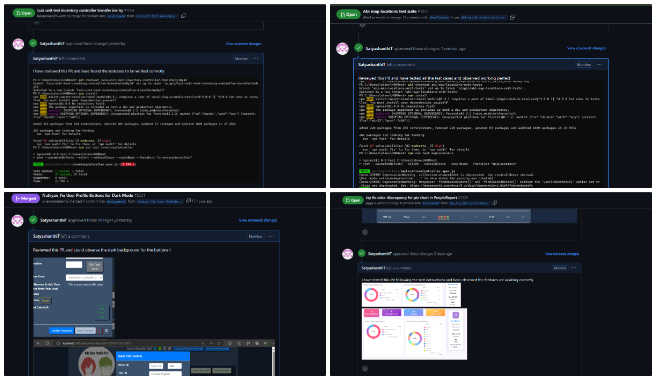
SOFTWARE PR REVIEW TEAM T-Z
The PR Review Team’s summary for team members’ names starting with T-Z and covering their work on the Highest Good Network software was managed by Olawunmi “Ola” Ijisesan (Administrative and Management Support) and Samarth Urs (Administrative Assistant and Data Analyst). The Highest Good Network software is a foundation of what we’ll be using to measure our results of assembling the social components for human abundance. This week’s active members of this team were: Varun Kumar Reddy Guntaka (Software Engineer), Xiao Wang (Software Engineer) and Yiyun Tan (Software Engineer). They reviewed all the Highest Good Network PRs (Pull Requests) shared in this week’s update. Learn more about how the Highest Good Network will measure and assist in assembling the social components for human abundance in the Highest Good Network open source hub. The collage below shows a compilation of the work from this team.
AND WE PRODUCED THIS WEEKLY UPDATES BLOG – CLICK HERE TO SUBSCRIBE
FOLLOW ONE COMMUNITY’S PROGRESS (click icons for our pages)
INVESTOR PAGES
GET INVOLVED
DONATE | WAYS ANYONE CAN HELP | MEMBERSHIP
CLICK HERE FOR ALL PAST UPDATES
Category: Basics of One Community, Community, One Community Tags: non profit, self-sufficiency, ecological living, creating holistic transformational change, sustainable living, radical sustainability, solutions that create solutions, regenerative world building, open source sustainability, open source housing, One Community progress, Duplicable City Center Hub, global sustainability, open source design, Education For Life progress, better is possible, for the highest good of all, Assembling the Social Components for Human Abundance, transforming the global environment, solution based thinking, sustainable community building, Earthbag Village, Highest Good education, one community, Permaculture Communities, Highest Good housing, food forest, green living, resource based economy, Highest Good food, sustainable civilization building, permaculture, RBE, Highest Good society, creating global solutions, One Community Update, addressing climate change, Education for Life update, creating a new world paradigm, open source, grass roots sustainability, open source food, the betterment of society
WHO WE ARE
MAIN OPEN SOURCE HUBS
GET INVOLVED
SPECIFIC HELP
- Seeking Web Developers
- Seeking General Contractor
- Seeking Software Developers
- Seeking Master Electrician
- Seeking Food Specialists
- Seeking Master Plumber
- Seeking Educators, Parents & Creative Minds
- Seeking Civil Engineer
- Seeking Structural Engineer
- Seeking Permaculturalists
- Seeking Irrigation Specialists
- Seeking Surveyor
- Seeking Lawyers and Paralegals
- Seeking Videographer
- Seeking Graphic Designer
FOOD COMPONENTS
- OS Hub
- Grow
- Build
- Ethical, Humane, & Conscientious Goat Stewardship
- Ethical, Humane, & Conscientious Rabbit Stewardship
- Ethical, Humane, & Conscientious Chicken Stewardship
- Food Forest
- Hoop Houses
- Apiary/Bee Yard
- Botanical Garden Creation & Inventorying
- Conscientious Wildlife Stewardship and Habitat Development
- Large-scale Gardening
- Soil Amendment & Site Preparation
 One Community
One Community